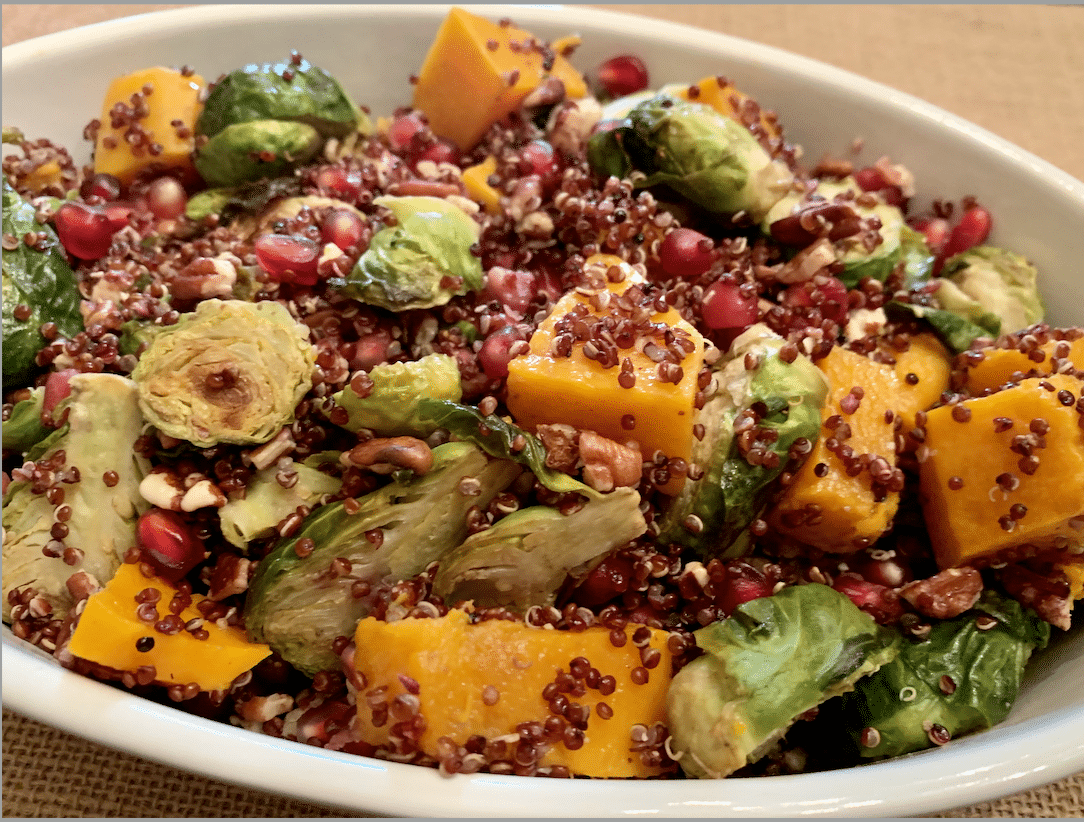Winter weather typically means piping hot soups and hearty chilis are simmering in a slow-cooker. Casseroles and comfort foods usually take center stage this time of year, edging out wholesome fruits and vegetables. Long gone is the array of summer’s bountiful crops convincing consumers the harvest is over. But, just because it is sweater weather, doesn’t mean you can’t enjoy seasonal salads. While there may be a smaller selection of in-season produce during the winter months, there is still plenty to build a healthy salad.
Greens are the base for traditional salads. Leafy green vegetables, regardless of the season, are an essential part of a healthy diet — the darker the green in the leaf, the more vitamins, minerals, and fiber. Several dark green leafy vegetables are in season during the coldest months, including kale, spinach, endive, and Mississippi’s beloved collard greens. All of winter’s greens can be eaten raw, but swap out crisp greens for sautéed leafy greens as the base of a warm winter salad. Whether you eat them raw or cooked, a winter diet rich in leafy greens helps reduce your risk of heart disease, high blood pressure, and mental decline.
Set aside your stereotypical salad toppers like carrots, cucumbers, and tomatoes, during the winter and pile on seasonal produce. Broccoli, Brussel sprouts, cabbage, cauliflower, parsnips rutabagas, or turnips can be chopped raw and make great salad toppers. Add in seasonal fruits such as apples, grapefruit, oranges, pears, or tangerines for a sweet twist. Use their fresh-squeezed fruit juice to make a homemade vinaigrette. Roast a pan of sweet potatoes or winter squash and cube them to toss in with sautéed greens. Beets are beautiful, delicious, and nutritious but can be a booger to prepare. Utilize canned vegetables like beets and hearts of palm to add distinct flavors without the fuss.
Make your winter salads hearty, heart-healthy, and fiber-filled by including cooked whole grains, like quinoa, barley, or burglar. Other fun winter salad toppings include pumpkin seeds, dried cranberries, chopped nuts, figs, and pomegranate seeds. Pair salads with popular lean proteins or plant proteins like frozen edamame or canned beans. Even when your slow-cooker is filling your home with smells of comfort foods, serve it with a winter salad on the side. Whether your winter salad is warm or cold, use these ideas to keep you healthy, full, and out of hibernation all winter long.
Brussel Sprout Quinoa Salad
Ingredients
- 1 pound Brussels sprouts, halved
- 3 cups butternut squash, cubed evenly
- 2/3 cup dry quinoa
- 1 medium pomegranate, deseeded
- 1/2 cup pecans, chopped
- Olive oil spray
Directions
- Preheat the oven to 375 F.
- Place Brussels sprouts on one side of the pan and butternut squash on the other side, or you can use two pans. Spritz vegetables with olive oil.
- Bake for 25 minutes; remove Brussels sprouts and place into a large bowl. Return squash to the oven if not yet tender; bake for 10-15 more minutes. Add to the bowl with Brussels sprouts.
- While the vegetables are baking, cook quinoa according to directions.
- In the large bowl with the vegetables, add cooked quinoa, pomegranate seeds, and pecans. Stir to combine. Serve warm.
*Time saver tip: Purchase pre-cut butternut squash, microwavable quinoa pouches, and pomegranate seeds.
Pomegranate and Pear Salad
Makes 1 serving
- 1 pear, thinly sliced
- 3 cups spinach
- ⅓ cup pomegranate seeds
- ⅛ cup of pecans
- ⅛ cup of blue cheese
- 2 tablespoons Sherry Vinaigrette
Directions
- Layer ingredients into a bowl or on a plate.
- Add dressing when ready to eat. Make several salads at once.
- Pair with a lean protein for an easy weekday lunch or convenient weeknight meal.




